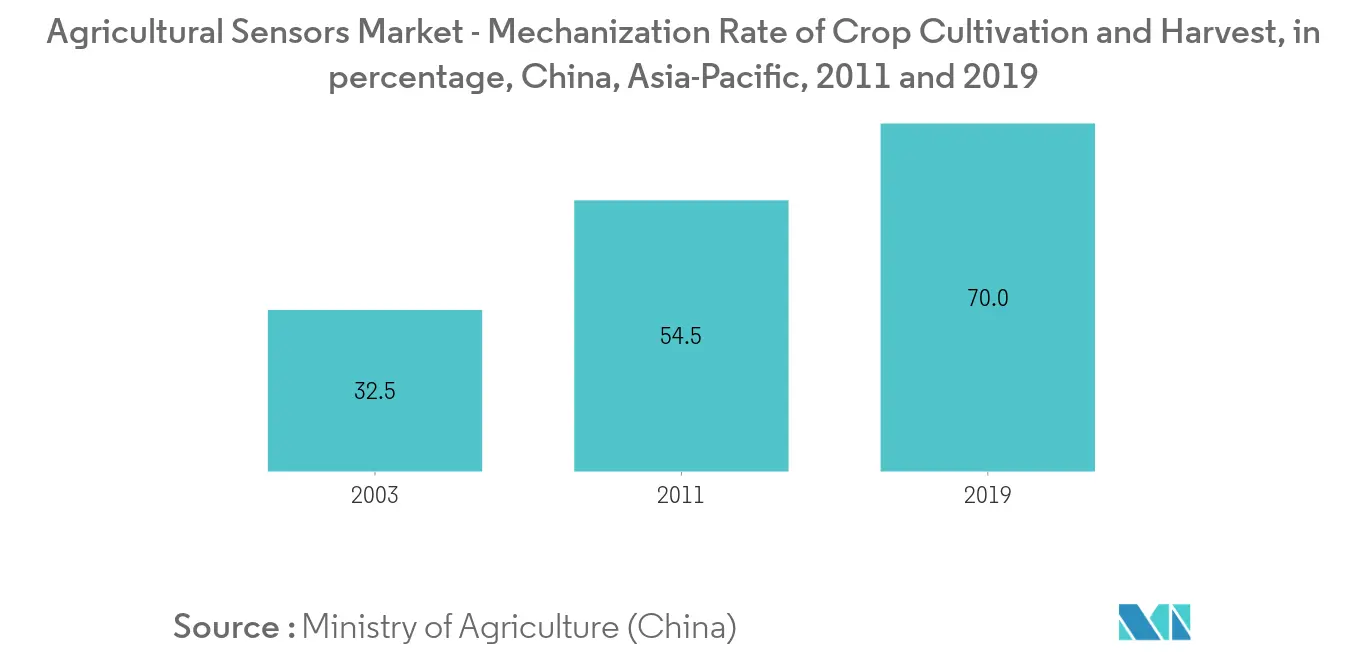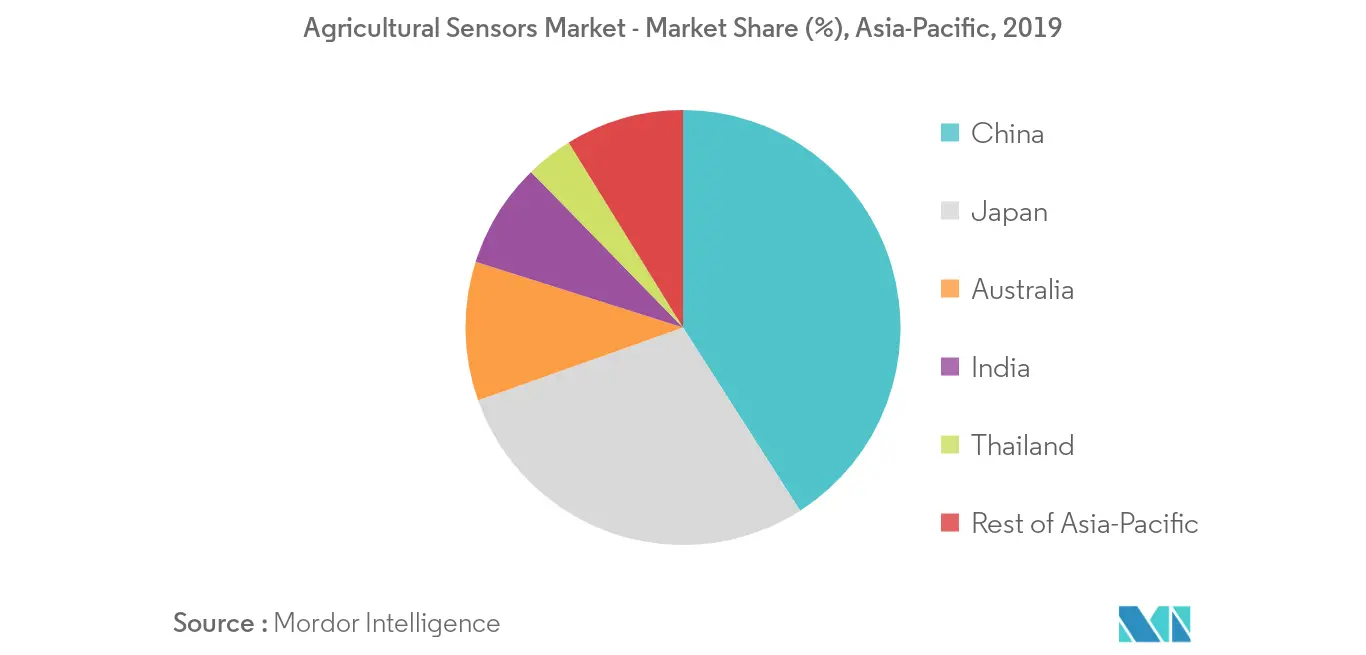Market Trends of Asia-Pacific Agricultural Sensors Industry
This section covers the major market trends shaping the APAC Agricultural Sensors Market according to our research experts:
Increasing Farm Mechanization Rates
The Asian agricultural sector underwent a groundbreaking revolution in terms of the adoption of smart farming practices in recent years. Although the advent of sensor-based technologies, such as Internet of Things (IoT) llular devices, gear tooth sensor-based irrigation and fertilization equipment, and valve position sensors, is relatively new in the domain. China's contribution rate to its agricultural science and technology progress serves as an indicator of the country's revitalization strategy in terms of agricultural modernization. The country witnessed a rise from 48.0% in 2005 to 59.2% in 2019 (Ministry of Science and Technology, China). Similarly, according to the Ministry of Agriculture, the rate of mechanization in crop cultivation and harvest rose exponentially, from 32.5% in 2003 to 70.0% in 2019. Therefore, the rapidly increasing rate of adoption of smart agricultural practices, with a simultaneously aligned high farm mechanization rate, is projected to drive the agricultural sensors market in China, thereby driving the Asia-Pacific sensors market during the forecast period.

China Dominates the Market
China dominates the Asia-Pacific agricultural sensors market, followed by Japan, Australia, and India. The Chinese government invested in revolutionizing its agriculture sector. With various policies, such as the Guiding Opinions of the State Council on Actively Promoting the "Internet Plus' Action (2015) and National Rural Revitalization Strategic Plan (2018-2022), the country is encouraging its farmers to adopt digitalized farming methods that depend heavily on sensors. A growing trend in Australian agriculture is the deployment of IoT sensors to track the health of livestock. Since greenhouse gases emissions from livestock is one of the major contributors to global warming, extensive research and trials are being employed to measure greenhouse emissions. According to the Remote Sensing Technology Center of Japan, in recent years, typhoons, localized downpours, droughts, and other extreme forms of weather phenomena tended to occur with greater frequency in the country, which necessitates robust action plan on food price volatility and agricultural outputs. This action plan includes various measures, such as use of remote sensing from satellites to improve predictions of crop production and weather forecasts. Although Internet of Things (IoT)-based agriculture is still nascent in India, mushrooming startups and India's food security concerns are likely to drive the market of sensors during the forecast period.

